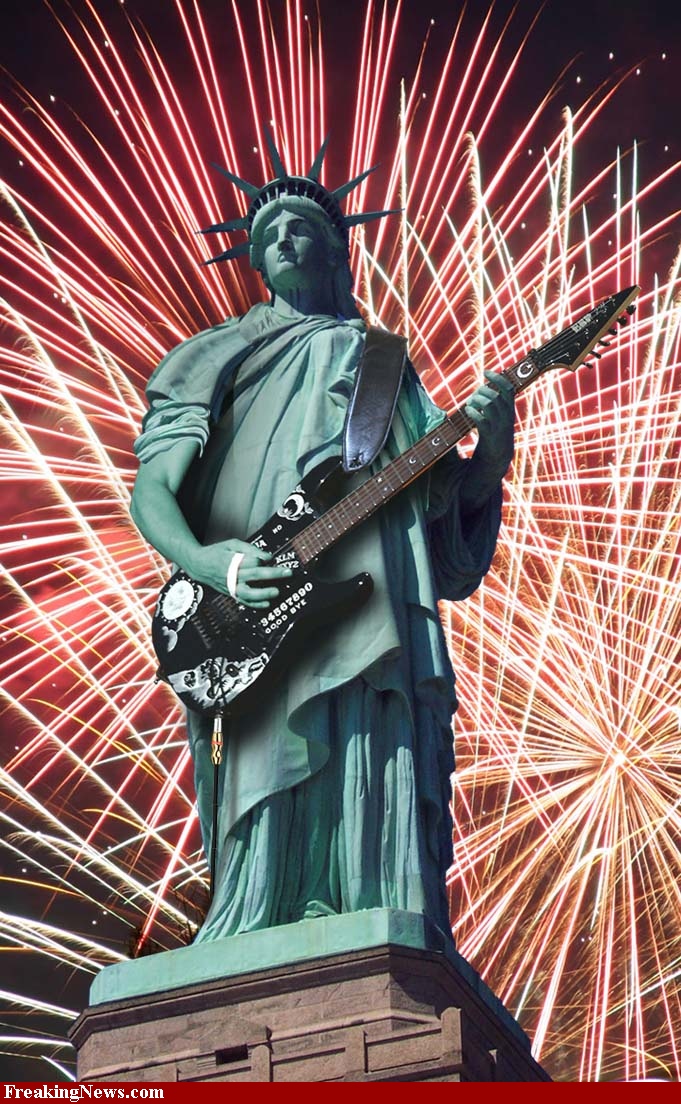|
Midterm1 (2013 midterm1 assignment) Sample Student Midterm Answers 2013 #1: Long Essay |
LITR 4333
|
 |
Stephen Rodwell
October 7th, 2013
It’s Not the Destination That Matters
When I first chose American Immigrant Literature, to take as
a class, I really thought I would be writing weekly assignments, and diagnosing
some author’s novel; however, what I didn’t know is that I would be learning the
differences between an Immigrant, and a Minority through their writings. These
two diverse groups are what shaped America, and have given us our rich,
eclectic, and sometimes dark history. The third group, the Dominant culture is
harder to define, but represents whiteness, and does not assimilate; instead,
the dominant culture conquers. (Course syllabus)
An Immigrant is a group of people who chose to
leave their home land in search of a better life, or the “American Dream.” The
standard Immigrant story focuses on escaping the Old World and arriving in the
New World to assimilate into its dominant culture. They came here following
their dreams of a more fulfilling life, a life where a person could prosper,
gain wealth, and gain an education; the catch, you had to work for it, because
nothing is free.
Our first story to focus on this transition, from
Old World to New World is “Soap and Water.” In this immigrant narrative, a
Russian woman is attending college in order to become a teacher, but Miss
Whiteside, the college dean, withholds her diploma. Miss Whiteside, who
represents the dominant culture, explains that she could not recommend the woman
as a teacher due largely to her appearance. We
find out later in the story that the lady must work before school, and after
school in the campus laundry, in order to earn her way through college. This
arrangement is typical of the immigrant narrative in which hard work, and
suffering at the hand of the dominant culture, is required to achieve their
dreams. This is best expressed when the woman states,” I came because I longed
for the larger life, for the stimulus of intellectual associations … but
everywhere I went I saw big fences put up against me with brutal signs: “No
trespassing, Get off the grass.” (Soap & Water)
Our second immigrant narrative, “The English
Lesson,” focuses on Assimilating
into the dominant American culture, and loosing one’s ethnic Identity.
Mrs. Susan Hamma, who represents the dominate culture, is an enthusiastic
teacher, trying to teach immigrants to speak English, while at the same time,
understanding the various cultural differences among the students. As Mrs. Hamma
has the class introduce themselves, and one student gives us his reasons for
wanting to learn to speak better English, “because my ambition is to learn to
speak and read English very good to get a better job. … To help my mother y
famila … to do better, that’s all,” (English Lesson) Diego Torres presents us
with a symbol of resistance, to assimilating into the dominant culture. Diego
came to America to “improve my economic situation,” but “I no give up my county
… I got no work at home … pero this is no my country.” In this situation Diego
is content with coming to America in order to gain an education, gain wealth,
and go back home and prosper.
A minority is a group of people who did not choose
to come to America, and in the case of the African American, they did not come
voluntarily, but were forced. The American Indian is another minority that was
forced to leave its original territory, not to improve their life, but to
improve the lives of the dominant culture.
“American Horse,” is a good example of a minority
narrative. It is the story of an American Indian woman and her son, and the
dominant culture or the Social Worker, who come to take the son away. In the
narrative, the woman it seems is an alcoholic, and is not providing the best
environment for her son to be raised in. As the story unfolds, the reader is
granted an insight into the shabby existence of the American Indian, and life on
the reservation. The Reservation Cop, who is an Indian, has acculturated into
the dominant culture, and assists the Social Worker in taking the boy from his
mother. The Cop could be representative of the Indians who helped the white man
during the “Trail of Tears,” or during the “Indian Wars.” The Social Worker,
In
the name of help came in and destroyed the family, just like the United States
Government has done ever since the “Trail of Tears.” These people never asked
for any help, and like a true minority their change was forced upon them (Andrew
“This Semester”)
In the poem, “I have not
signed a treaty with the United States Government,” Chrystos gives us a very
angry, American Indian feeling towards the United States Government, She
declares’ “ We have signed no treaties … you’ve had your fun now go home … your
colors hurt our feet,” These are references to the many broken treaties
committed by the U.S. Government, the dominant culture, and the, “Trail of
Tears.”
Another minority narrative
that exemplifies this forced move is, “The
Interesting Narrative of the Life of
Olaudah Equiano . . . , the African.”
This is the story of an African slave, who is on a slave ship, and has lost all
hope, “I
now saw myself deprived of all chance of returning to my native country, or even
the least glimpse of hope of gaining the shore which I now considered as
friendly.” (The “African”) As a slave Equiano, learns that every person he
develops affection, for he gets separated from, due to them being sold on the
slave market. Eventually Equiano, lives with a Christian family and wants to be
like them in every way, he wants to assimilate into their culture, and he
eventually gains his freedom.
The Model Minority is the term that applies to a group of people who assimilate
very well into the American culture. Asian Americans are a model minority,
because they overcome the hardships of immigrating to America i.e. language
barriers, cultural barriers, economic barriers, and ill treatment by the
dominant culture, to become successful American Citizens. Typically Asian
Americans score the same as other Americans, and this correlates with the level
of income and education of their parents. Asian Americans equal 5% of the U.S.
population, they make up 10% of college undergraduates. The Model Minority also
obeys the law of the land.
In the narrative, “In The Land Of The Free,” the arriving Asian immigrant couple
is greeted by a couple of customs officials, the dominant culture, and after
some questioning it is determined by the officials that the baby that belongs to
the Asian couple does not have the proper paperwork in order to enter the
country. The Customs officials take the baby and place the baby in a Government
foster home of sorts. “Thus was the law of the land complied with.” (Land of the
Free)
In the narrative, “In the American Society,” we are given the example of how the
model minority becomes very successful, and assimilated while retaining their
Asian values. The father and
mother, along with their family own a pancake diner, and become financially
independent, “father
took over the pancake house … sent little sister Mona and me to college … we got
rich right away” (American Society) While at a pool party, the father is
insulted by the home owner, the dominant culture, and this causes the father to
stand his ground, the father proclaims, “I do not take orders like a servant.”
(American Society)
The story of the American
culture has been built upon the millions of immigrants and minorities, who came
to America seeking the “Dream,” or who had no choice in the matter. At some
point in both of their journeys, these cultures would have to face the dominant
culture. How well the immigrants and the minorities assimilate into the dominant
culture, often determines the fate of their journey. In the end, it’s not the
destination that matters, but the journey that counts.



